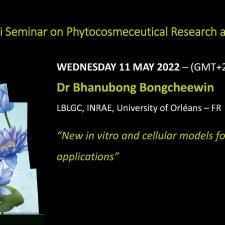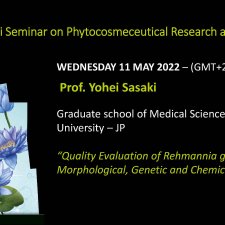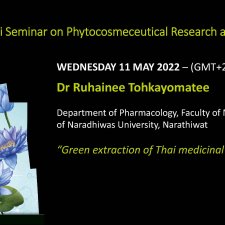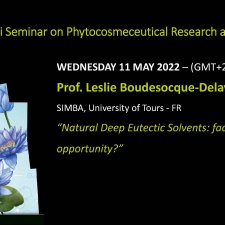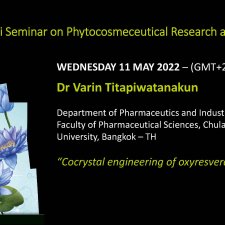Notice
Prof. Emilie Destandau - Molecular network
- document 1 document 2 document 3
- niveau 1 niveau 2 niveau 3
Descriptif
Specialised metabolites constitute a high valuable resource of bio-active compounds that are highly sought after for pharmaceutic and cosmetic applications. However, plant extracts are very complex and the characterisation of their molecular composition or the targeting of molecules responsible for the extract biological activity is really challenging. To perform compound identification Ultra High Performance Liquid Chromatography hyphenated to High-Resolution Mass Spectrometry (UHPLC-HRMS) is one of the most used techniques. Indeed, it allows to separate the different compounds according to their polarity and to obtain their exact mass that could be associated to their molecular formula. As the UHPLC-HRMS is a powerful technique numerous mass spectra containing each of them several characteristic ions (molecular and fragment ions) are recorded, the data interpretation for a complex extract remains long and fastidious. Thus, different chemometric and bio-informatic tools can be used to help compound identification. Among them Molecular Network permits to associate compounds with similar mass spectrum into a same cluster, while compounds with different mass spectrum are distinguished in another cluster or placed as single nod. A cartography of the extract is obtained with a classification of compounds according to their mass spectrum that is related to their molecular structure. Moreover, this map facilitates the comparison of extracts and the identification of bioactive compounds in the complex extract.
Thème
Dans la même collection
-
Dr Arnaud Lanoue - Agricultural by-products valorization
Winemaking generates different biomolecule-rich byproducts, including pomaces (skin and seeds), lees, as well as other solid wastes like grape canes.
-
Dr Bhanubong Bongcheewin - The Mint family (Lamiaceae) in Thailand- A potential material source for…
Lamiaceae is the large family, consisting of more than 7,000 species worldwide
-
Prof. Yohei Sasaki - Quality Evaluation of Rehmannia glutinosa by Morphological, Genetic and Chemic…
Previously, the medicinal plant, Rehmannia glutinosa, is grouped into two types in Japan. However, previous reports of genetic analysis of R. glutinosa in commercial products suggest the existence of
-
Dr Ruhainee Tohkayomatee - Green extraction of Thai medicinal plants
Extraction is a major step to separate bioactive compounds from raw material and medicinal plants, which extracted by the pharmaceutical industry, either with conventional methods or modern
-
Prof. Leslie Boudesocque-Delaye - Natural Deep Eutectic Solvents: fad or real opportunity?
NaDES appeared at the end of the 2010s following the work of Dai et al. Since then, the enthusiasm for these new green solvents linked to ionic liquids has continued to grow.
-
Dr Varin Titapiwatanakun - Cocrystal engineering of oxyresveratrol
Oxyresveratrol (ORV) is a compound found in the heartwood of Artocarpus lakoocha Roxburgh (Moraceae). It has diverse biological and therapeutic activities covering antioxidant, anti-inflammatory,


